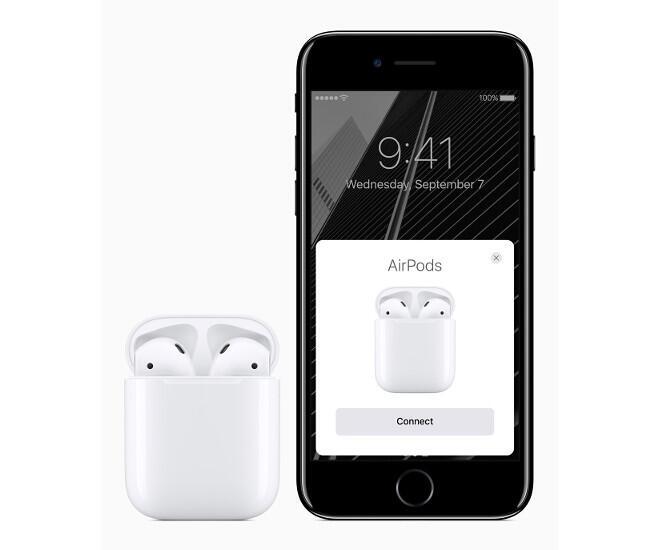Jack is dead: Apple unveils first wireless SoC
Article By : Rick Merritt

The company’s new wireless AirPods and three new wireless Beats headphones include a custom chip called the W1.
Tech giant Apple's new products are packing at least three new chips, including its first wireless SoC to date. But the company’s largest and most complex effort remains the iPhone application processor—the 64-bit A10 Fusion in the iPhone 7 and 7 Plus packs 3.3 billion transistors.
The SoC adopts ARM’s Big.little approach, using two high performance cores running 40% faster and two high efficiency cores at one-fifth the power consumption of the A9 SoC in the iPhone 6. It also sports a six-core GPU that’s 50% faster than graphics in the A9.
“It’s the most powerful chip in a smartphone,” said Apple Vice President of marketing Phil Schiller, although companies including Mediatek and Samsung are shipping apps processors with eight or more cores.
Apple provided few details on its chip-level work. It left gaping holes about whether all the A10 cores were custom or some were sourced from ARM or others, what process the chips were made in and what data rates they hit. The company was most forthcoming about its success in greater silicon efficiency. As a result the iPhone7 on average delivers as much as two hours longer battery life than the iPhone 6, although on the dual-camera iPhone 7 Plus the extra life is trimmed to one hour.
Apple broke out battery life figures by workloads. It reported for example that the iPhone 7 delivers 14 hours of web browsing and 12 hours of LTE use on a charge.
The biggest surprise of the event came from the lowly earbud. Apple’s new wireless AirPods and three new wireless Beats headphones include a custom chip called the W1. The company gave no details about just which functions the chip controls but ostensibly they include audio playback and wireless reception.
![[Apple airpod 01]](/wp-content/uploads/sites/2/2020/04/Apple_airpod_01.jpg)
__Figure 1:__ *Apple’s new AirPods use a custom W1, the company’s first wireless chip.*
Apple’s Schiller and the company’s materials did not mention the term Bluetooth. One source suggested the products use near field magnetic induction, a mature technology that has been used in hearing aids for the past decade” and currently available in chips from NXP Semiconductors, at least to synchronise the two devices.
Schiller said AirPods do not require a device pairing process typical of Bluetooth. A one-step process lets them pick up audio from either an iPhone or Apple Watch which presumably would at least require some variant of a Bluetooth or Wi-Fi transmission.
The buds include external accelerometers and optical infrared sensors as well as a noise cancelling mic and a battery in their shank that can support five hours of use. They charge via a Lightning interconnect in a case that contains its own 24-hour battery.
Separately, Apple rolled out an updated Apple Watch Series 2. It uses a so-called S2 system-in-package with a 50% faster dual-core CPU and 2x faster GPU than are in the current model.
The company demonstrated a star-gazing app that delivered 5x more detail at 60fps, thanks in part to the upgraded chip. The original S1 was used as an example at a recent event of the direction in system-on-package trends where the 26mm x 28mm device was said to include 30 components and multiple packaging techniques.
The watch display was upgraded to 1,000-nits brightness for better use in direct sunlight. It also includes a built-in GPS for the first time. Apple made no mention of improvements in the battery life of the watch, one of the top criticisms of the first-gen device.
Finally, Apple mentioned a new image signal processor which it showed in a way suggesting it was a block on the A10 SoC. It sports twice the throughput of the prior ISP, executing up to 10 billion operations per second, Schiller said, calling it a “supercomputer for photos.”
The block plays a role in a new portrait mode that uses the two cameras on the iPhone 7 Plus. It helps recognises faces, build a depth map and blur the background in a new portrait mode emulating professional cameras, using software Apple will release in October.
Subscribe to Newsletter
Test Qr code text s ss


